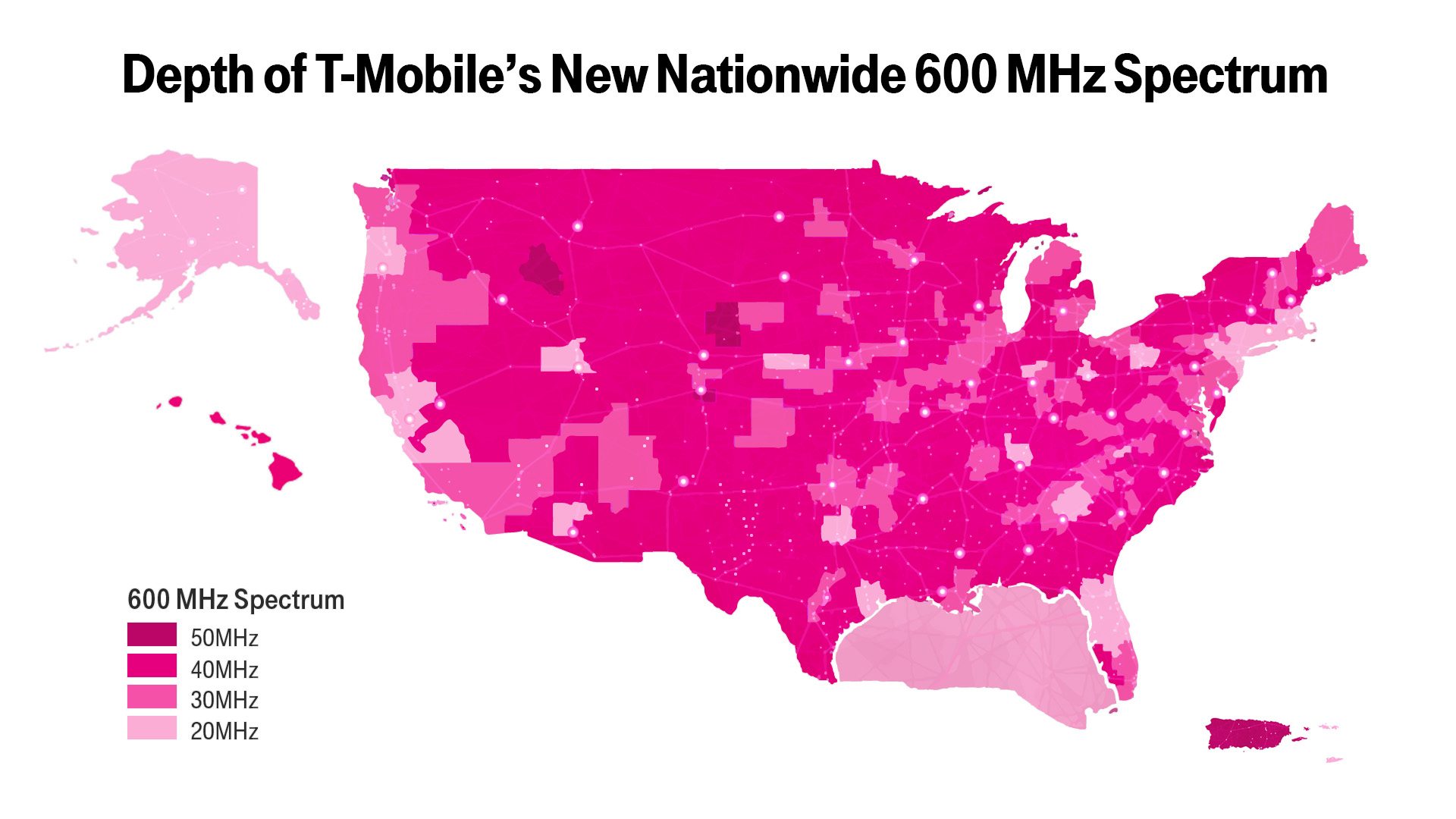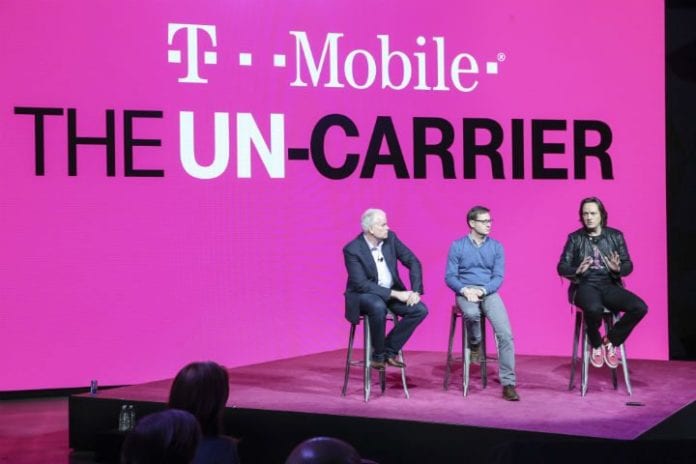T-Mobile said it won 45% of all 600 MHz spectrum sold in recent incentive auction and plans to begin deployment later this year.
T-Mobile US, which was the big spender in the Federal Communications Commission’s recently completed 600 MHz incentive auction, said it plans to put some of those low-band spectrum resources to work this year.
As part of its vast haul of spectrum licenses, T-Mobile US said it’s expecting this year to have access to at least 10 megahertz of 600 MHz spectrum covering more than 1 million square miles. The carrier cited claims by vendors Ericsson and Nokia that they planned to have 600 MHz-enabled network equipment available this year that would allow T-Mobile US to begin deploying spectrum support, as well as a statement from Qualcomm that it would be introducing smartphone chipsets to support the 600 MHz band.
Ericsson noted earlier this month it planned to have a “suite” of 600 MHz products ready for commercial deployment by the third quarter of this year, “providing operators the ability to quickly launch services in their new 600 MHz spectrum holdings.” Ericsson noted the equipment would be based on its 4478 radio platform recently introduced at the Mobile World Congress event, and include multiple-input/multiple-output antenna technology.
“Our team has a history of deploying network technologies at record-breaking pace – including the fastest recorded LTE deployment in U.S. history,” said T-Mobile US CTO Neville Ray, in a statement. “We’re ready to break records again on 600 MHz.”
T-Mobile US spent nearly $8 billion during the auction, winning a total of 1,525 10-megahertz licenses covering 414 of the auction’s 428 partial economic areas. The carrier said it won 45% of the spectrum sold with an average depth of 31 megahertz and at least 10 megahertz covering all of the U.S. and Puerto Rico.

Television broadcasters that gave up their spectrum holdings as part of the auction’s reverse bidding process are now on the clock to give up those licenses over the next 39 months, though some have noted that easier-to-clear markets could be available within the next few months.
Other significant 600 MHz spectrum license winners included Dish Network and Comcast, though neither company currently has a commercial wireless communications network. Comcast recently announced plans to move on establishing a wireless service using Verizon Wireless’ network under a mobile virtual network operator model.
AT&T and regional carrier U.S. Cellular were among the established telecommunication operators that invested heavily during the auction and could be seen as joining T-Mobile US in driving early deployments using the 600 MHz spectrum. Verizon Communications was not a high bidder for any of the 600 MHz licenses up for grabs, while Sprint sat out the auction proceedings.
T-Mobile bolstering LTE deployment
T-Mobile US has been steadily bolstering its LTE network, which it said it expects to be the foundation for the eventual launch of a “5G” network.
The carrier late last year said its LTE network coverage had reached 313 million potential customers covered by the end of 2016, compared with 304 million pops covered at the end of 2015. T-Mobile US’ coverage has been bolstered by its deployment of 700 MHz spectrum support, with Ray noting the carrier covered more than 250 million pops with its sub-1 GHz spectrum across more than 500 metro areas.
In the shadow of the 5G hype, Ray claimed the carrier has witnessed LTE network speeds of 979 megabits per second in a lab environment using a combination of three-carrier aggregation, 4×4 multiple-input/multiple-output antenna technology and 256 quadrature amplitude modulation in an “unreleased handset.”
Speaking at last year’s Competitive Carriers Association Annual Conference, Ray said the carrier expects its current LTE technology will be its primary competitive position for the next five to 10 years.
“5G will come on top of that,” Ray told CCA attendees. “We are going to push the envelope and make sure we are ready for 5G.”
Bored? Why not follow me on Twitter.

